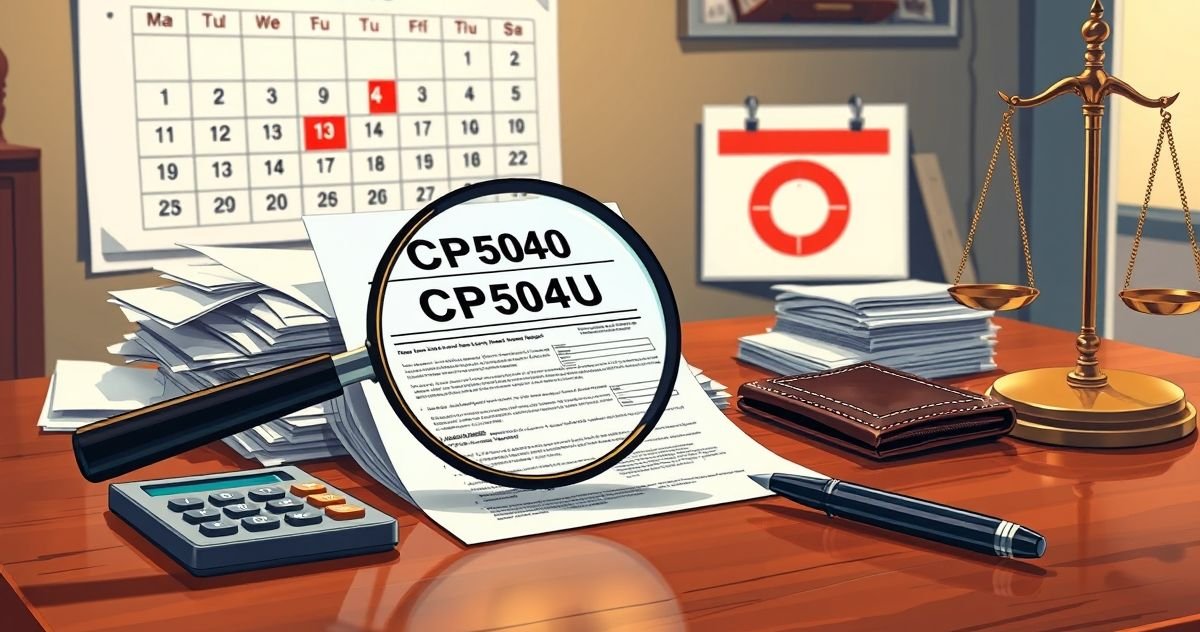Understanding the CP504U Notice
The CP504U Notice is a critical communication from the Internal Revenue Service (IRS) directed at taxpayers with outstanding tax liabilities. Receiving this notice indicates that the IRS has identified unpaid taxes and is considering further collection actions, including levies or seizure of assets. It serves as a crucial reminder of the taxpayer’s legal obligations and the immediate need to address the debt to avoid severe financial consequences.
Primary Purpose
The primary purpose of the CP504U Notice is to alert the taxpayer to their overdue taxes and inform them of impending actions the IRS may take if the debt is not resolved promptly. Specifically, it acts as a final warning before the IRS can initiate enforced collection actions, such as placing a levy on your property or rights to property. Therefore, this notice demands serious attention and immediate action to prevent escalating the situation.
Key Features and Components
The CP504U Notice typically includes several vital pieces of information that taxpayers should thoroughly understand:
- Amount Due: The notice specifies the total amount of taxes owed, including any accrued penalties and interest. It is crucial to review this amount and ensure its accuracy based on the taxpayer’s records.
- Due Date: The notice indicates a specific deadline by which the taxpayer must either pay the outstanding amount or make arrangements with the IRS. Missing this deadline could lead to additional penalties and enforced collection actions.
- Potential Penalties and Actions: The notice clearly outlines the potential for the IRS to levy assets, including wages, bank accounts, and other properties, if the debt remains unresolved past the notice’s deadline.
- Instructions for Payment: The CP504U Notice provides detailed instructions for settling the debt, including various payment options such as online payments, installment agreements, or paying by check.
- Contact Information: Essential IRS contact details are included for taxpayers to reach out with questions or to discuss payment options.
Relevant Filing or Compliance Requirements
Addressing a CP504U Notice requires compliance with specific filing and payment requirements:
- Verify Information: Taxpayers should first confirm the accuracy of the notice details. Comparing the notice with personal tax records ensures there are no discrepancies that might require correction or amendment.
- Make Payment: If the notice’s balance due is correct, immediate payment is highly recommended. Taxpayers can choose a suitable payment method listed in the notice.
- Negotiate Payment Plan: Those unable to pay the full amount might need to contact the IRS to negotiate a payment plan or installment agreement, thereby avoiding harsher collection measures.
Penalties or Consequences for Non-Compliance
Ignoring or failing to address a CP504U Notice can lead to significant consequences:
- Asset Levy: The IRS has the authority to levy (legally seize) your property if tax obligations are unmet. This could include bank accounts, wages, or other financial assets.
- Additional Penalties and Interest: The longer the taxpayer delays settlement, the more penalties and interest accrue, further increasing total debt.
- Credit Impact: Non-compliance might adversely affect the taxpayer’s credit score, impacting loan opportunities or financial stability.
Importance in Tax Resolution and Financial Compliance
The CP504U Notice holds significant importance for tax resolution and ensuring compliance with federal tax laws. Timely and effective response to this notice prevents further complications, such as enforced collections or legal proceedings. It emphasizes the taxpayer’s responsibility to maintain accurate tax filings and shows the importance of proactive debt management.
In essence, the CP504U Notice is a pivotal element in the IRS’s efforts to collect overdue taxes, and understanding its components and implications can help taxpayers manage and resolve tax debts efficiently. For individuals, this notice serves as a critical prompt to review financial practices and obligations deeply, ensuring future compliance and financial well-being.

